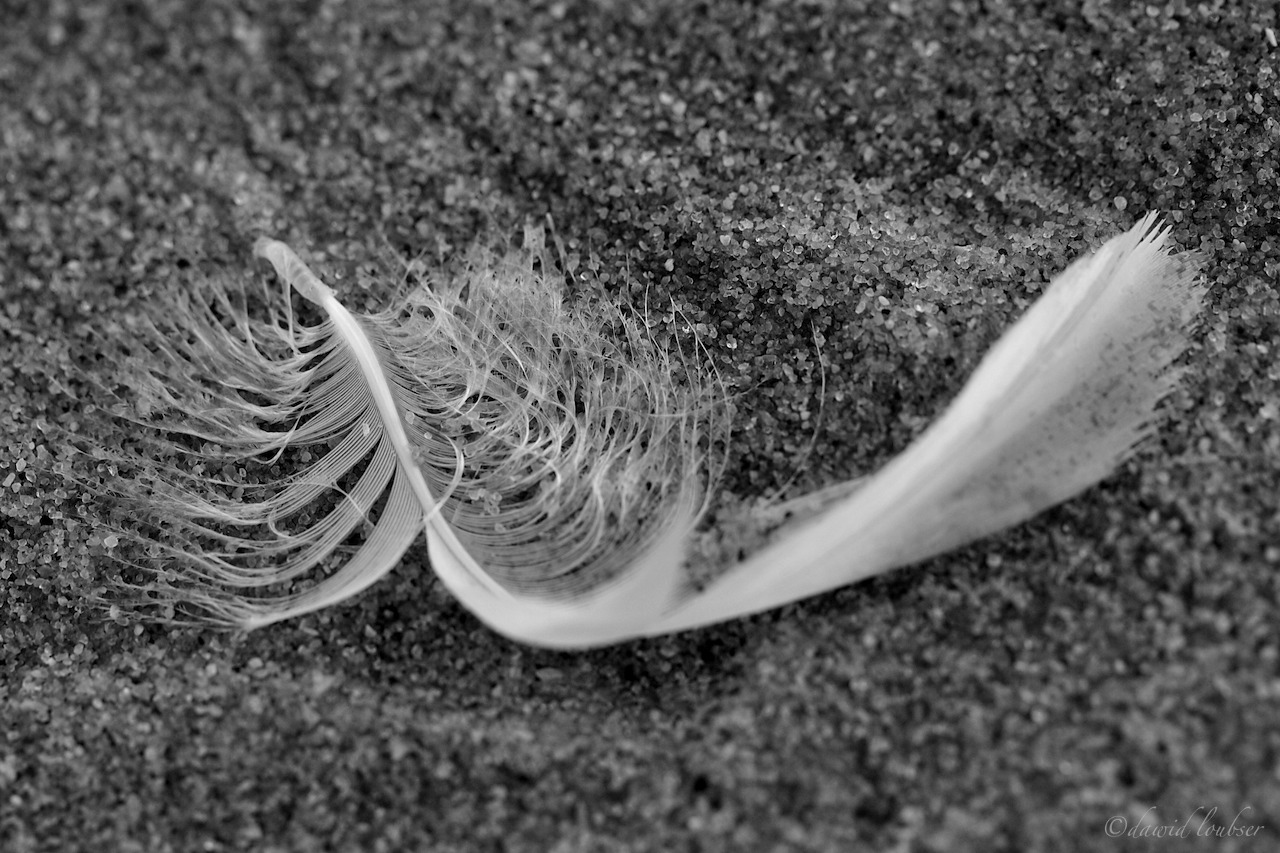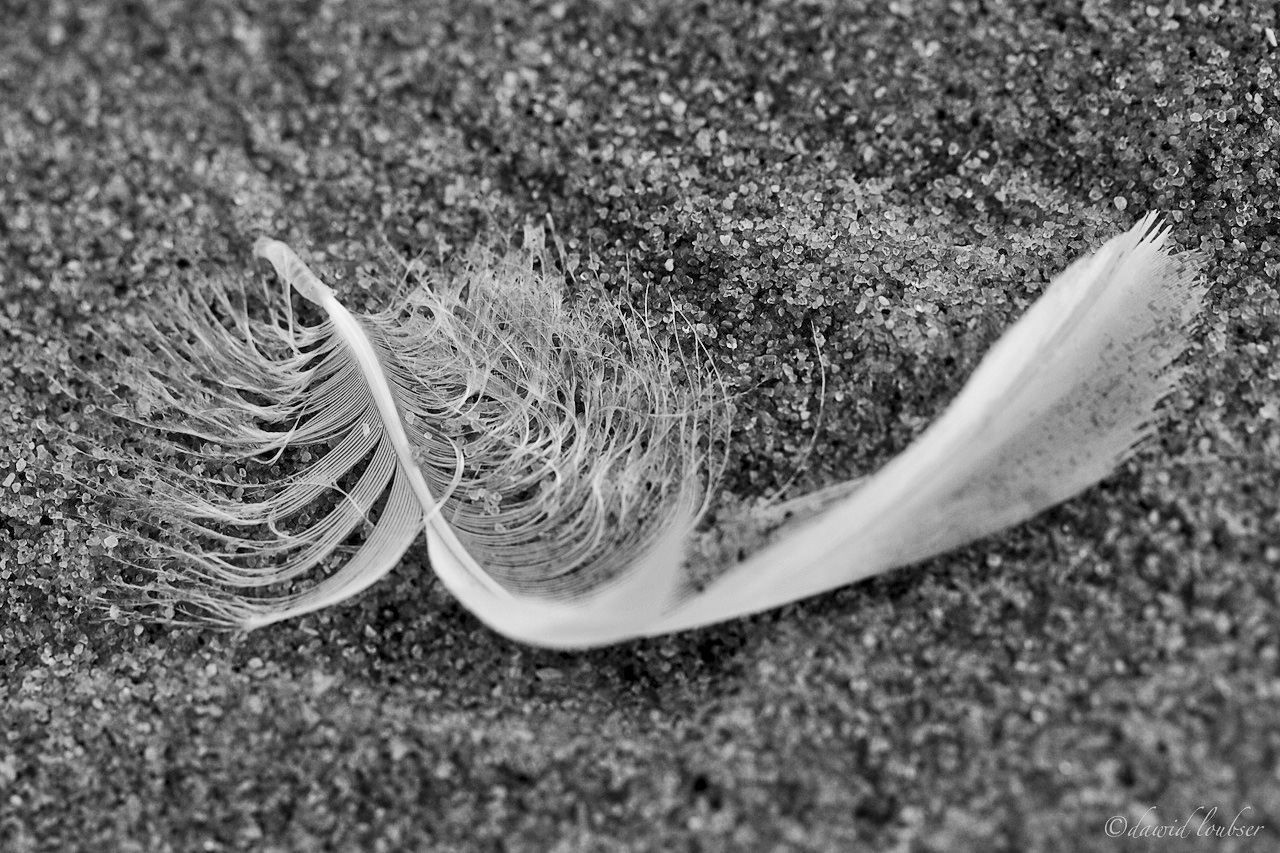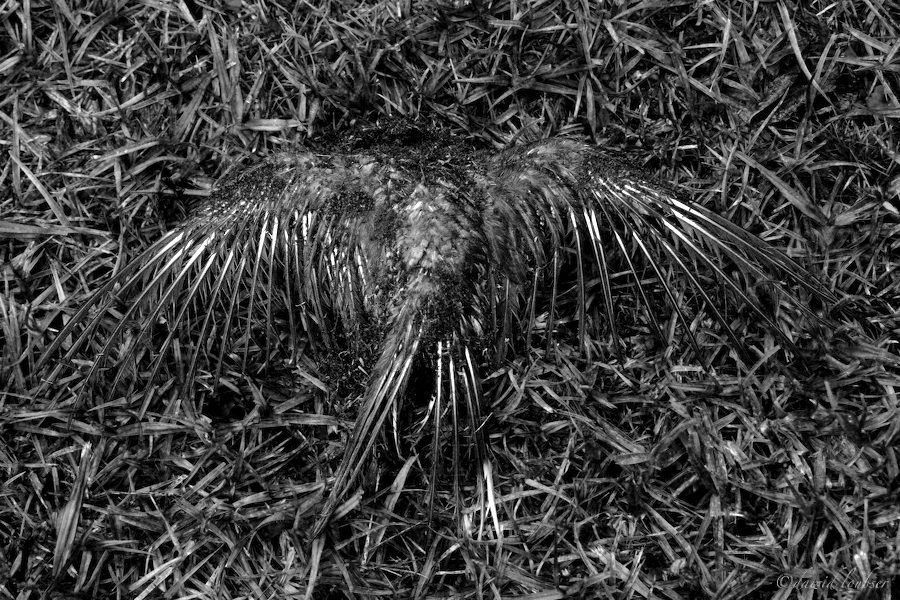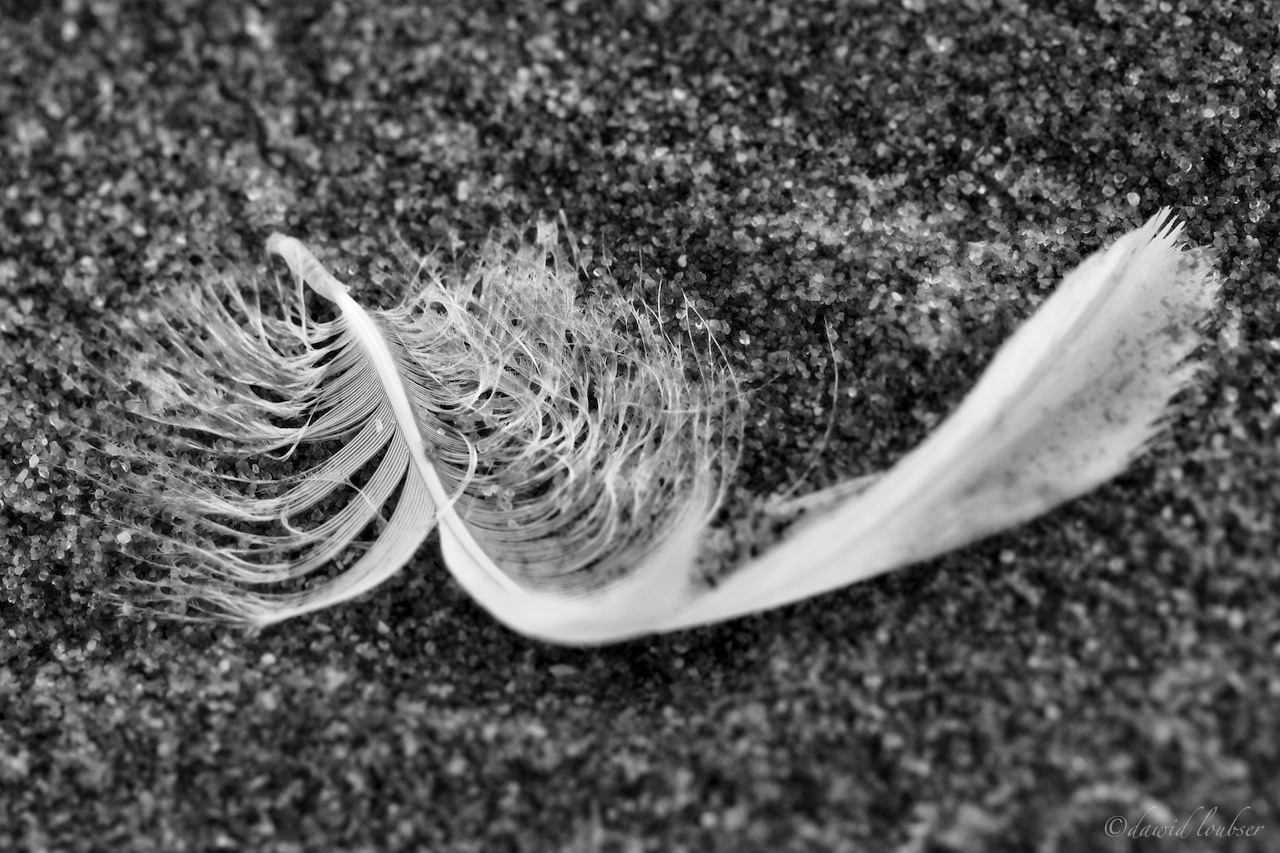Hi Asher, Greg,
I sort-of facetiously used the word "art" specifically because it has no well-defined interpretation. Kind of a different way of asking whether this image takes your fancy, and why... I post on this forum for two reasons - the one is pure expression (exhibition), the other is, of course, to learn. I find there is always a fine line between one's "own style", and of course, falling short of accustomed technical criteria. Let me give you a bit of context:
I did not place the feather, it was simply lying there. Whenever we're down there at the coast, my beloved and I like to take early morning walks along this very wild, empty beach. Almost every morning, we find some or other delicate insect who landed itself in the wet surf, lying on its back, feathers stuck to the wet sand, feet struggling for a foothold. Typically a large moth, a bee, etc. I always found the contrast between the delicate living thing, and the harsh sea and sand, most interesting, and we always try to "rescue" the poor creature by putting it on higher, dry ground. I typically never "interfere" but how can one resist?
Here, I found another delicate object in the same situation, but no inclination or need to rescue it, for it is inanimate. So, for the first time, I photographed it instead.
Now, for the technical and learning part: I am torn between taking images with sufficient depth-of-field (which everybody "expects" one to do), versus applying my "style" of focusing on only one thing in an already simple scene. In this case, I wish I took two versions, but I am an emotional photographer, and regardless of whether it's easy with digital or not, I usually take only one "shot at it" - as I see it in my mind.
At large size, the only striking element is the exquisite detail in the feather strands, offset by the sand detail. I think I wanted it that way, but as I said, I should have taken it with deeper DOF. Now, regarding the tonality - I have a tendency to compress this somewhat with very high contrast, in order to make the image more "stark" - however, what would you suggest? I'm not sure that I want to post the RAW file of this one just yet, but any pointers would be great.
Thanks for the thoughtful interest, as always.







